Fire pits are a popular addition to any outdoor living space. They provide warmth and ambiance, making them a great gathering spot for friends and family. But have you ever wondered how hot a fire pit can get?
Knowing the temperature of a fire pit is important for safety reasons and can also help you determine what type of fuel to use.
The heat produced by a fire pit can vary depending on the type of fuel used and the design of the fire pit.
Wood-burning fire pits tend to burn hotter than gas fire pits, but both can produce temperatures that exceed 1,000 degrees Fahrenheit.
It is important to keep in mind that the temperature of a fire pit can be affected by factors such as the size of the fire, the type of wood or gas used, and the amount of air circulating around the fire.
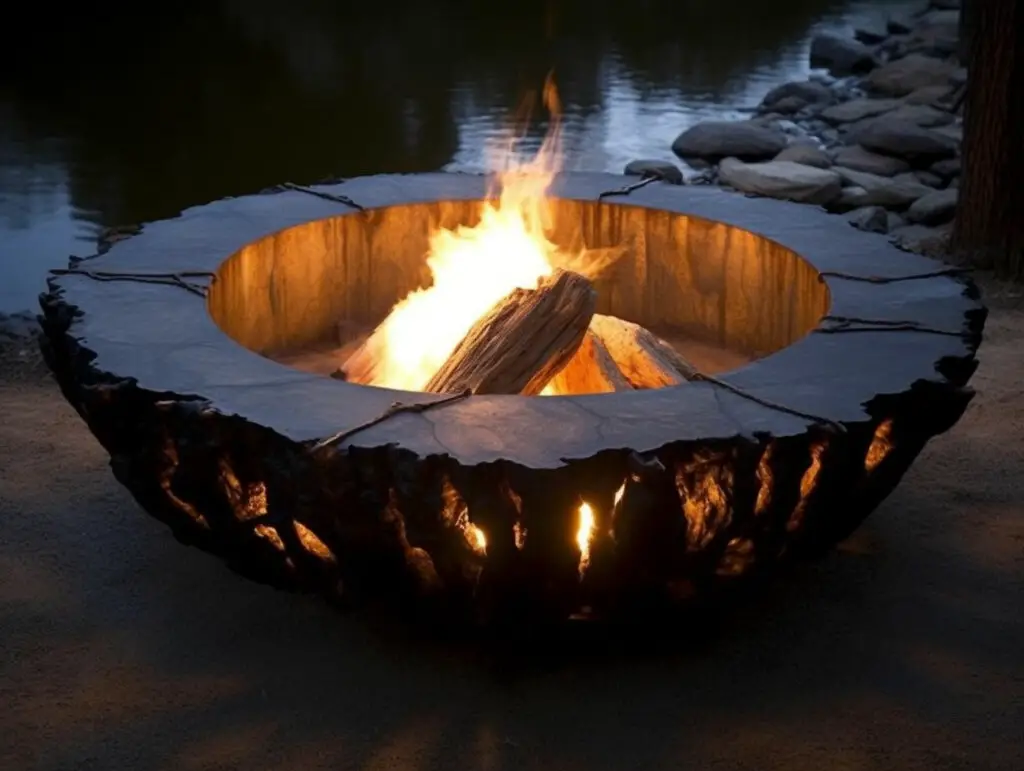
How Fire Pits Work
Fire pits are popular outdoor heating and entertainment features that provide warmth and create a cozy ambiance. They come in various shapes, sizes, and styles, and can burn different types of fuel, including wood, propane, natural gas, bioethanol, smokeless coal, and gel fuel.
Fuel Type
The type of fuel used in a fire pit affects its performance, heat output, and efficiency. Wood-burning fire pits are traditional and rustic, but they require more maintenance and produce more smoke and ash than gas or electric fire pits. They also have a lower BTU rating than gas or propane fire pits, but can still reach temperatures of over 100,000 BTUs.
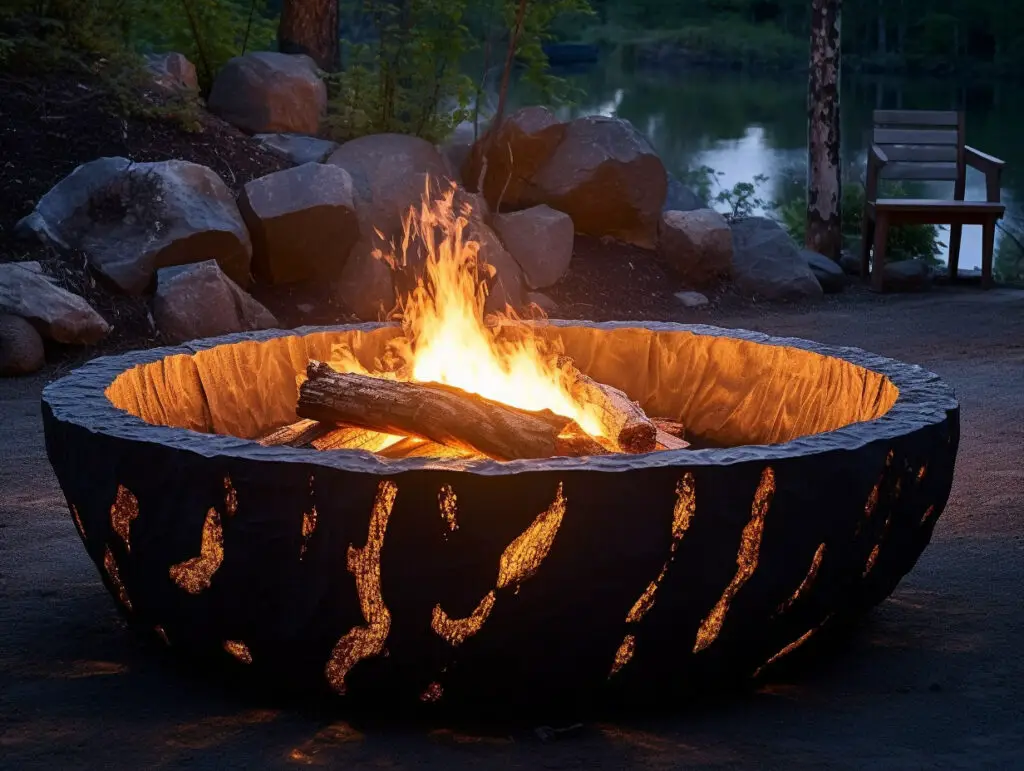
Gas fire pits, on the other hand, are cleaner, more convenient, and easier to control. They can burn propane or natural gas and have a higher BTU rating than wood fire pits, ranging from 10,000 to 70,000 BTUs.
They also come in various designs, such as table-top, bowl-shaped, or linear, and can be fueled by a gas line or a propane tank.
Bioethanol fire pits are eco-friendly and smokeless, but they have a lower heat output than wood or gas fire pits, reaching up to 4,000 BTUs. They are fueled by denatured alcohol and can be used indoors or outdoors, but they require a well-ventilated area and frequent refueling.
Heat Output
The heat output of a fire pit depends on its fuel type, BTU rating, and design. A larger fire pit generally produces more heat than a smaller one, and a fire pit with a higher BTU rating can generate more warmth than a lower-rated one.
Wood fire pits can reach temperatures of up to 2,012 degrees Fahrenheit, while gas fire pits can reach up to 1,000 degrees Fahrenheit. Gel fuel fire pits have a lower heat output than wood or gas fire pits, but they are safe and easy to use, as they don’t produce smoke or sparks.
Electric fire pits are the safest and most convenient option, as they don’t require any fuel or flames. They use electricity to generate heat and come in various styles, such as wall-mounted, free-standing, or table-top. They are also energy-efficient and can be used indoors or outdoors.
In conclusion, fire pits work by burning different types of fuel to generate heat and create a cozy atmosphere. The type of fuel used affects the performance, heat output, and efficiency of the fire pit, and should be chosen based on personal preference, design, and safety considerations.
Factors Affecting Fire Pit Temperature
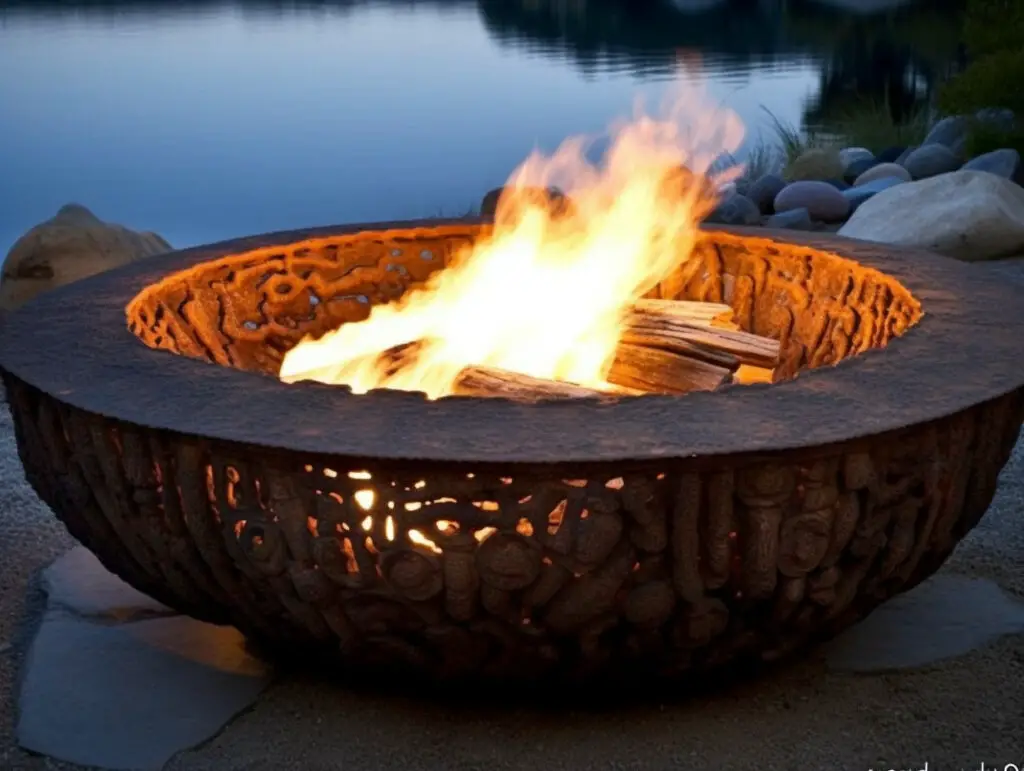
There are several factors that affect the temperature of a fire pit. Understanding these factors can help you control the heat output and keep yourself and your surroundings safe.
Wind
Wind can significantly affect the temperature of a fire pit. If the wind is blowing too hard, it can cause the flames to burn unevenly and can even extinguish the fire. On the other hand, if there is no wind, the fire pit can become too hot, which can be dangerous. It is best to keep the fire pit away from any strong winds and to use a windbreak if necessary.
Oxygen Supply
The amount of oxygen supplied to the fire pit can also affect its temperature. If there is not enough oxygen, the fire will burn slowly and may not generate enough heat. If there is too much oxygen, the fire may burn too hot and can even become dangerous. It is important to maintain a good balance of oxygen supply to keep the fire burning at a safe and consistent temperature.
Materials
The materials used to construct the fire pit can also affect its temperature. Metal fire pits tend to conduct heat better and can therefore generate higher temperatures. Ceramic fire pits, on the other hand, tend to retain heat better and can therefore generate more residual heat. The type of fuel used can also affect the temperature of the fire pit.
Shape
The shape of the fire pit can also affect its temperature. A wide and shallow fire pit can generate more heat than a narrow and deep fire pit. This is because the wider fire pit allows for more oxygen to reach the flames, which can increase the heat output.
It is important to note that the temperature of a fire pit can vary depending on the type of fuel used, the size and type of the fire bowl, and the ambient air temperature. Using an infrared thermometer can help you measure the temperature of the fire pit and ensure that it is at a safe and consistent level.
In summary, wind, oxygen supply, materials, and shape are all factors that can affect the temperature of a fire pit. By understanding these factors and taking the necessary precautions, you can enjoy the warmth and ambiance of a fire pit while keeping yourself and your surroundings safe.
Safety Precautions
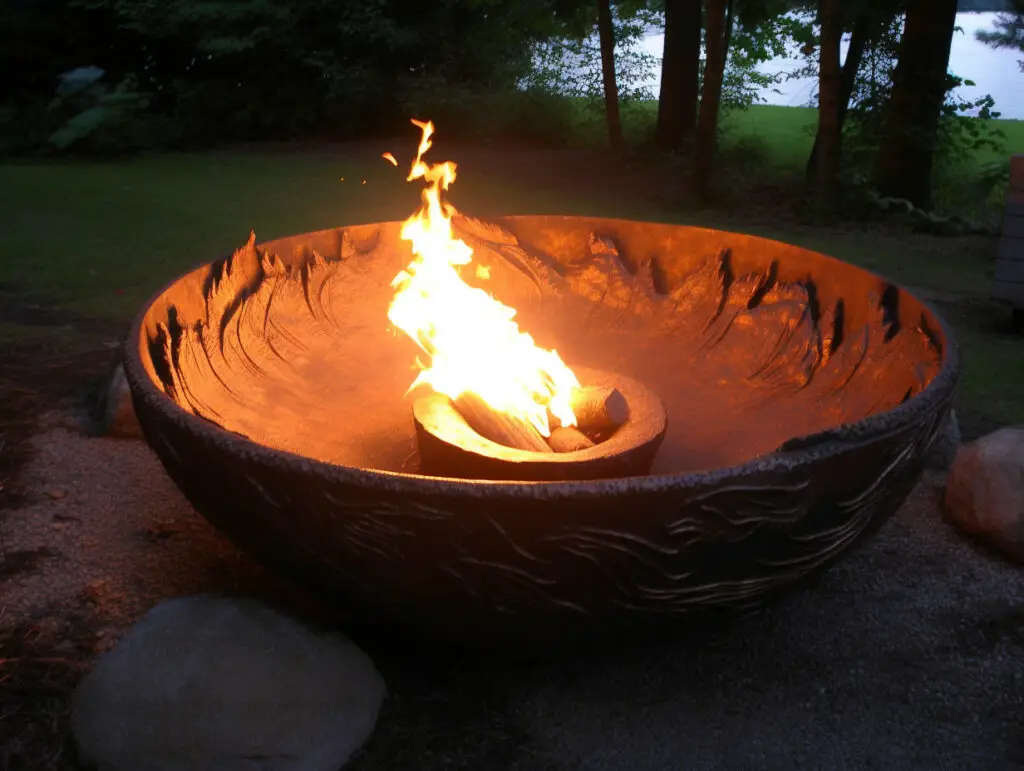
When using a fire pit, safety should always be a top priority. Here are some important safety precautions to keep in mind:
Fire Extinguisher
Always have a fire extinguisher nearby when using a fire pit. It is best to keep one close so that you can easily eliminate fire when needed. Make sure that the extinguisher is rated for Class B and C fires, which are the types of fires that can occur when using a fire pit.
Location
The location of your fire pit is critical. Keep the fire as far away from flammable objects as you can. This means that your plants and other objects that can attract flame must be 10 to 20 feet away. Additionally, keep chairs at a safe remove from the fire pit (generally 2 to 3 feet for gas fires, and 3 to 4 feet for wood burning). Keep children 3 to 10 feet from the flames.
Buy a fire pit pad designed to protect deck surfaces, or DIY a pad using pavers, stone, bricks or metal. The pad should extend at least 24 inches beyond the fire pit in all directions. Make sure your deck can handle the weight of the fire pit and pad. Never place your fire pit directly on a fire pit pad or the deck surface.
Weather
Be aware of the weather conditions when using a fire pit. Avoid using the fire pit on windy days or when there is a risk of wildfires. Keep an eye on the weather forecast, and if there is any chance of rain or strong winds, it is best to postpone using the fire pit until conditions improve.
Stationary
Make sure your fire pit is stationary and cannot be easily tipped over. If you have a portable fire pit, make sure that it is placed on a flat, stable surface. Do not move the fire pit when it is in use, and never leave it unattended.
By following these safety precautions, you can enjoy your fire pit with peace of mind.
Cooking on Fire Pits
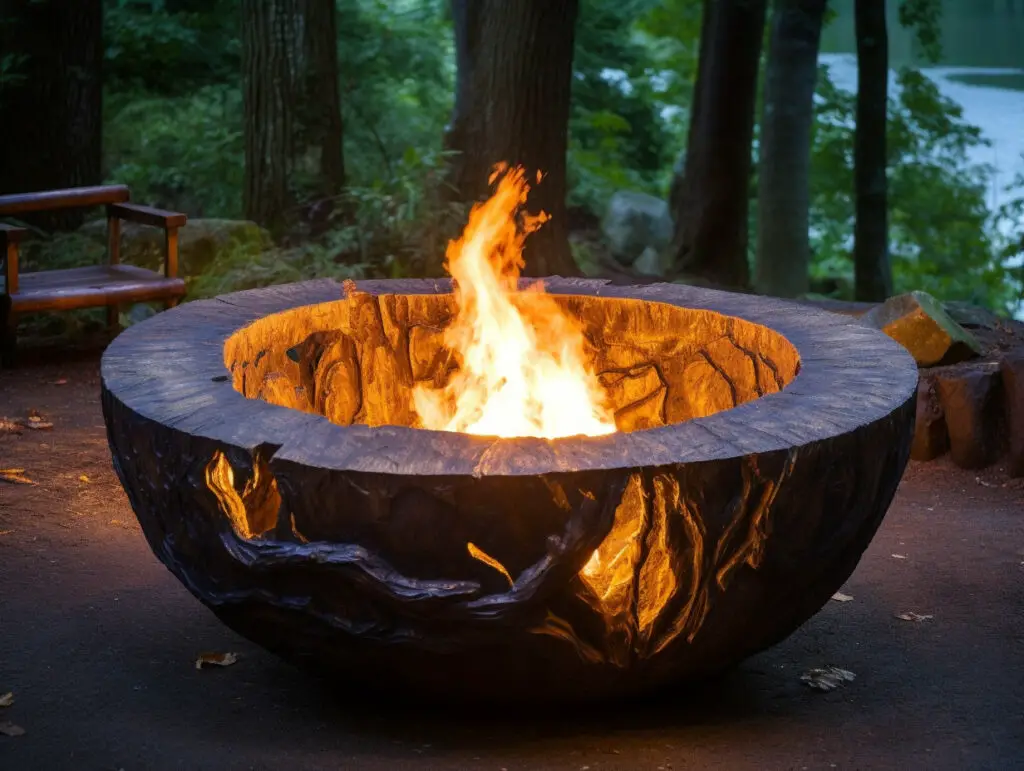
Cooking on a fire pit is a fun and exciting way to prepare food. It is a great way to enjoy the outdoors and socialize with friends and family. Cooking on a fire pit can be done using a variety of cooking surfaces and techniques.
Cooking Surfaces
There are several cooking surfaces that can be used on a fire pit. Here are some of the most popular options:
- Grills: Grills are a popular choice for cooking on a fire pit. They come in a variety of sizes and shapes and can be made from different materials such as cast iron, stainless steel, or aluminum.
- Skewers: Skewers are a great option for cooking meat and vegetables over a fire pit. They can be made from metal or bamboo and come in different sizes.
- Dutch ovens: Dutch ovens are a versatile cooking vessel that can be used for baking, roasting, and stewing. They are made from cast iron and can be used on a fire pit with the help of a trivet.
Cooking Tips
Here are some tips to help you get the most out of your fire pit cooking experience:
- Use hardwoods: Hardwoods such as oak, hickory, and maple are great for cooking on a fire pit. They burn hotter and longer than softwoods and produce less smoke.
- Use charcoal: Charcoal is a great option for cooking on a fire pit. It burns hotter and cleaner than wood and is easy to control.
- Keep it simple: When cooking on a fire pit, it’s best to keep things simple. Stick to basic recipes and ingredients that are easy to prepare.
- Don’t forget the s’mores: No fire pit cooking experience is complete without s’mores. They are easy to make and a crowd favorite.
Cooking on a fire pit can be a fun and rewarding experience. With the right cooking surface and techniques, you can create delicious meals and memories that will last a lifetime.
Fire Pit Styles and Designs
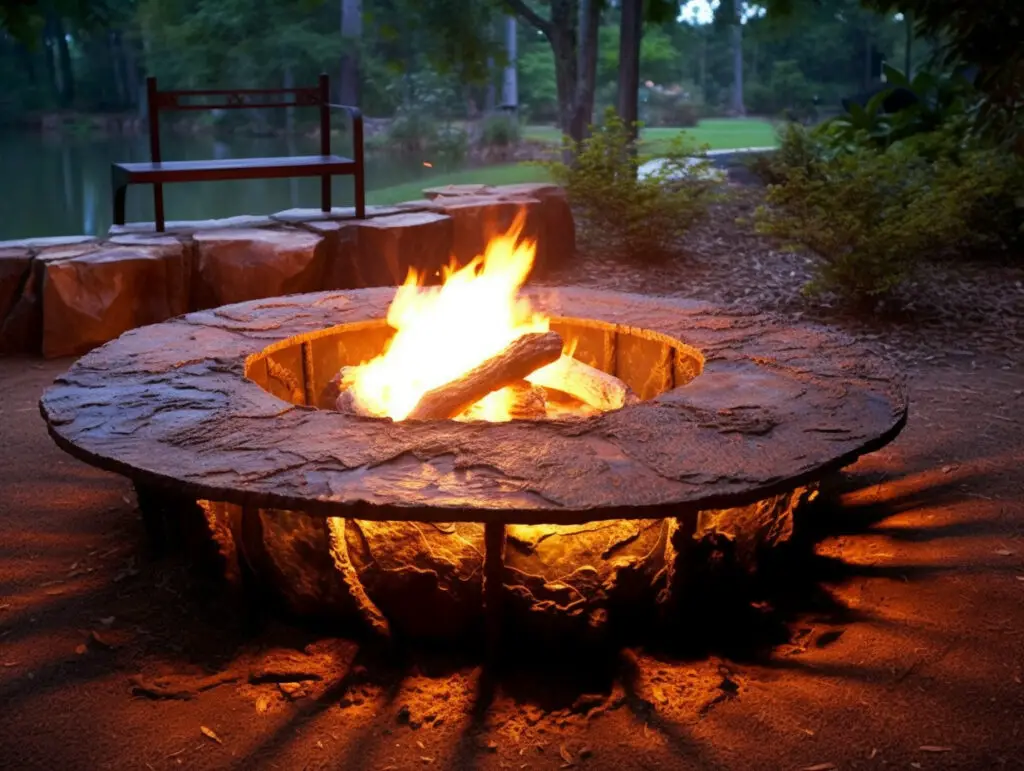
When it comes to fire pits, there are several styles and designs to choose from. Each style has its own unique features and benefits. In this section, we will discuss some of the most popular styles and designs of fire pits.
Metal Fire Pits
Metal fire pits are a popular choice due to their durability and versatility. They are available in a wide range of styles and sizes, from small portable models to large permanent installations. Metal fire pits can easily climb to 800 degrees Fahrenheit and are perfect for outdoor gatherings and cooking.
Some popular metal fire pit styles include:
- Bowl Fire Pits
- Chiminea Fire Pits
- Ring Fire Pits
- Table Fire Pits
Manufacturers such as Solo Stove and Landmann offer a wide range of metal fire pits in various styles and sizes.
Gas Fire Pits
Gas fire pits are a popular choice for those who want a fire pit that is easy to use and maintain. They are available in both small and large sizes and can produce anywhere from 1,000 BTUs to 70,000 BTUs. Gas fire pits are connected to a gas line and can be turned on and off with the flip of a switch.
Some popular gas fire pit styles include:
- Table Fire Pits
- Bowl Fire Pits
- Fire Tables
Manufacturers such as Outland Living and TACKLIFE offer a wide range of gas fire pits in various styles and sizes.
Bioethanol Fire Pits
Bioethanol fire pits are a great choice for those who want a fire pit that is eco-friendly and easy to use. They burn at the lowest heat, reaching 4,000 BTU, and are perfect for small outdoor spaces. Bioethanol fire pits are fueled by bioethanol, a renewable and sustainable fuel source.
Some popular bioethanol fire pit styles include:
- Table Fire Pits
- Bowl Fire Pits
- Column Fire Pits
Manufacturers such as EcoSmart Fire and Planika offer a wide range of bioethanol fire pits in various styles and sizes.
Glass Fire Pits
Glass fire pits are a popular choice for those who want a fire pit that is both decorative and functional. They are available in a wide range of styles and sizes, from small portable models to large permanent installations. Glass fire pits use tempered glass rocks to create a beautiful and mesmerizing flame.
Some popular glass fire pit styles include:
- Bowl Fire Pits
- Table Fire Pits
- Rectangular Fire Pits
Manufacturers such as American Fire Glass and Firegear Outdoors offer a wide range of glass fire pits in various styles and sizes.
In conclusion, there are many styles and designs of fire pits to choose from, each with its own unique features and benefits. Whether you prefer a metal fire pit, gas fire pit, bioethanol fire pit, or glass fire pit, there is a fire pit out there that will meet your needs and enhance your outdoor space.
Conclusion
In conclusion, the heat output of a fire pit depends on several factors, including the type of fuel used and the construction of the fire pit. Metal fire pits can reach temperatures up to 800°F, while wood fire pits can reach temperatures up to 2,012°F. Gas and gel fire pits have lower heat output, ranging from 1,000 to 70,000 BTUs. Bioethanol fire pits burn at the lowest heat, reaching 4,000 BTUs.
It’s essential to understand the potential hazards of fire pits and take necessary safety precautions. Never leave a fire pit unattended, and never leave children or pets near the fire pit. Always keep a fire extinguisher or bucket of water nearby in case of an emergency.
When selecting a fire pit, consider the size of the pit and the space where it will be used. A smaller fire pit may be suitable for a small patio or balcony, while a larger pit may be better suited for a backyard. Additionally, consider the fuel source and the heat output when selecting a fire pit.
Overall, understanding the heat output of a fire pit is crucial for safe and enjoyable use. By taking necessary safety precautions and selecting the right fire pit for your needs, you can enjoy the warmth and ambiance of a fire pit without risking injury or damage to your property.

![What Gravel To Use For Patio Base [Best Options]](https://www.cleverpatio.com/wp-content/uploads/2021/11/What-Gravel-To-Use-For-Patio-Base-270x180.jpg)
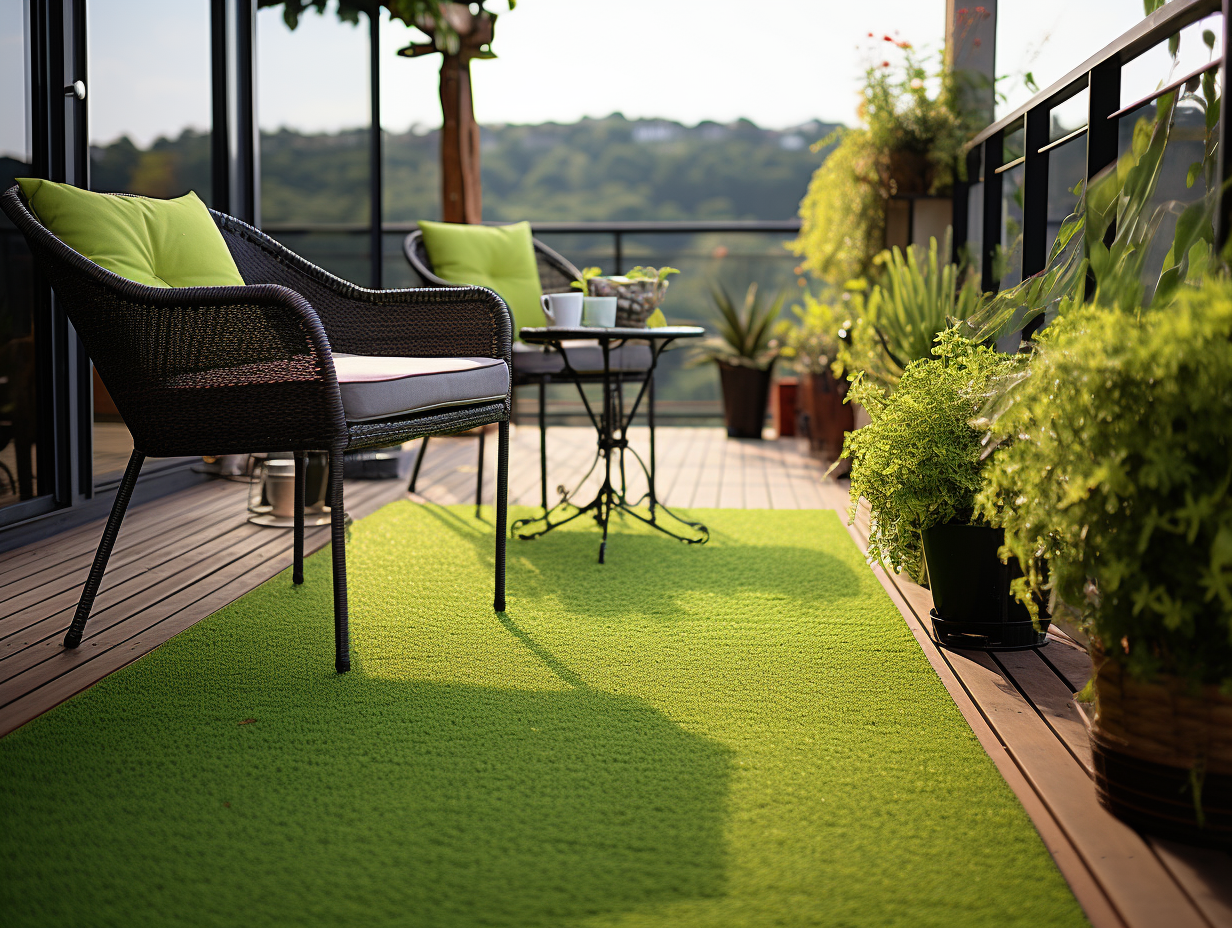
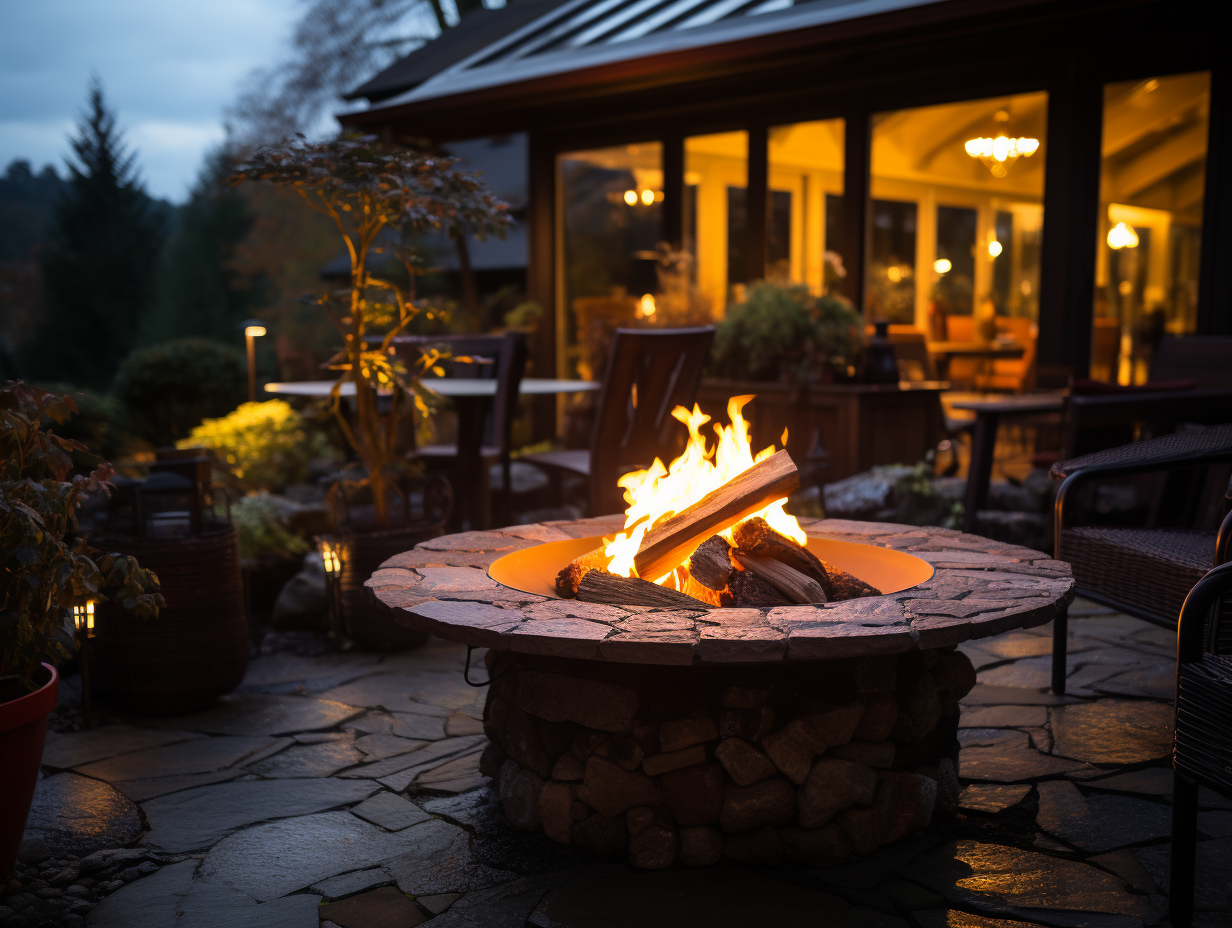
Leave a Reply